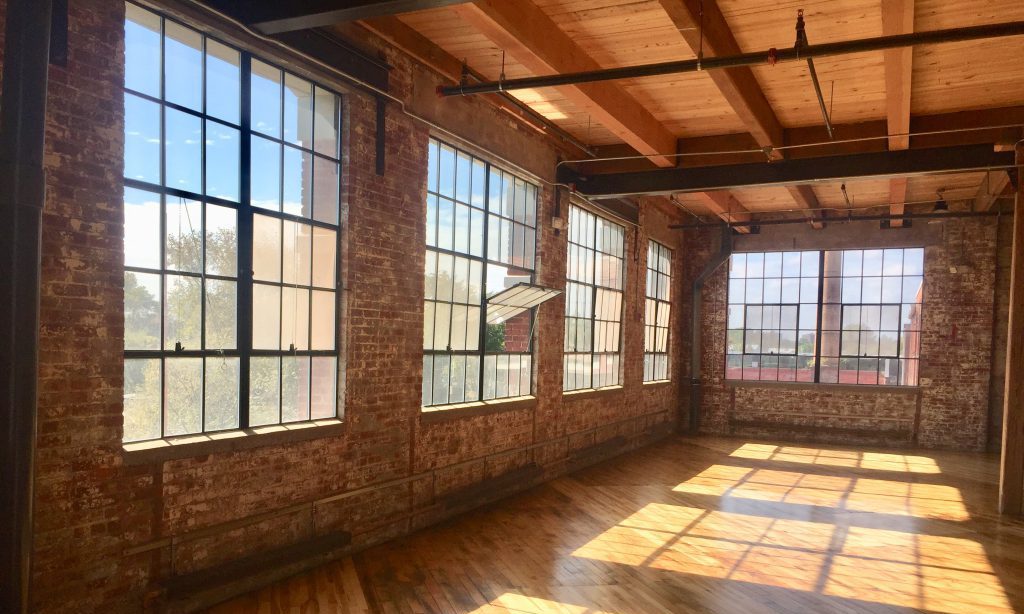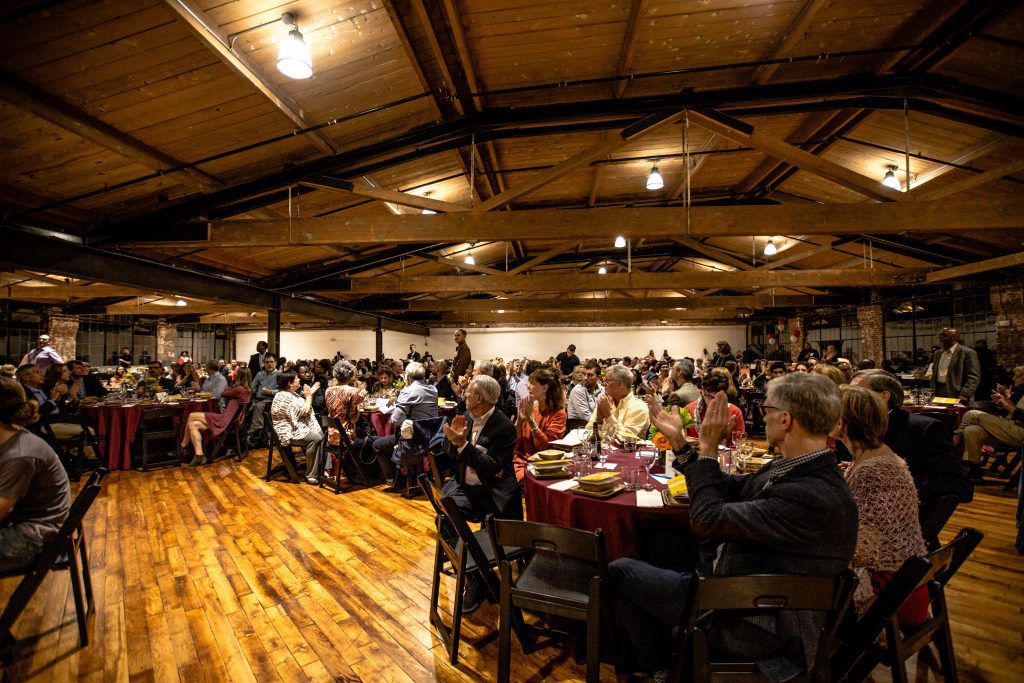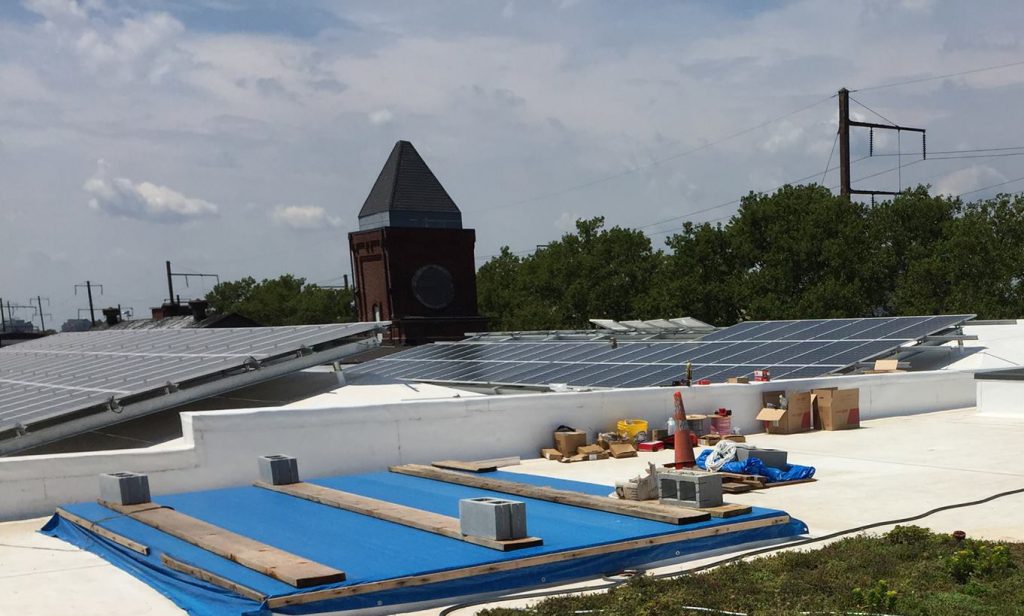Originally a textile mill, Mill One has a rich history extending more than 120 years.
Manufacturing Years
With the advent of steam power, factories could move away from the rivers and waterfalls that had once been their only source of power. The original building at Mill One was constructed in 1897, by architect William A. Poland, for the V. Henry Rothschild Company as a facility for manufacturing shirts and other clothing.
The last single manufacturing owner was the Atlantic Products Corporation who produced luggage, val-a-pac, par-pak, zipper bags, golf bags, par-bags, suitcases, briefcases, and sporting athletic goods at the complex from 1931 until 1982.
A Rich Moment in Mill One History: Girls Attack Mill Official
In 1912, wages were under pressure and national labor organizers came to Trenton. At the time, 500 girls worked in Mill One. A strike in 1913 shut down Straus Woolen Mills for months.
An article on the front page of The New York Times captured a confrontation between an official of the mill and strikers.
By making national news Mill One’s historic strike brought much needed attention to the issue of child labor that was happening nationwide in the early 20th century. The incident ultimately helped strengthen labor unions which led to the improvement of working conditions for all.
“Some 500 girl strikers set upon Holdsworth Robertson, one of the officials of the Straus Woolen Mills, in this city, this afternoon. Cries of “Lynch him!” were heard, and it looked for a time as though the strikers might carry out the suggestion. Robertson took refuge in a trolley car, but the girls got in the path of the car, and the motorman was compelled to stop. Then the girls stormed the car, but the conductor slammed the door at one end, and the motorman stood guard at the other and prevented the women from entering.”
“Some one sent for the police, and when they arrived they took Robertson, a prisoner, to the station, and to-morrow mornining he will have to answer a charge of assault and battery which 14-year-old Anna Soltis, a striker will make against him.”
“Anna Soltis was doing picket duty near the mill when Robertson ordered her to move on. She refused, and then, she says, Robertson struck her. She screamed, bringing to her aid some 500 girls strikers who were holding an open air meeting near by.”
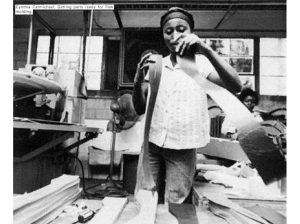
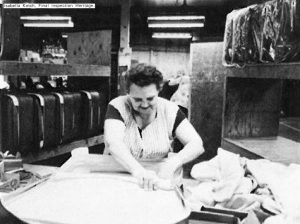
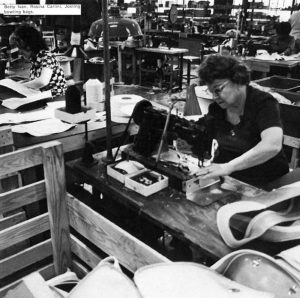
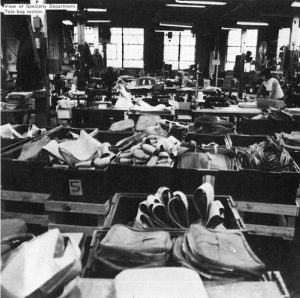
Building Decline
The complex was purchased by the New Jersey Economic Development Authority in 1985 and then resold to the real estate developer Hamilton Fidelco Association. Parts of the building were able to be leased, but the building began to decline over the next two decades.
A Brighter Future
In 2006, Mill One was acquired and painstakingly rehabilitated to turn it into what it is today.
By repurposing an important historic factory building, the project has both preserved the structure’s appealing architectural features and saved the energy and resources that are lost when destroying a building to make way for new construction.
Staying true to its striking architectural features, Mill One still boasts high ceilings, massive timber framing, plenty of natural light, while retrofitting it for modern use and sustainability.
Sustainability
Pursuant to Isles’ sustainability mission, Mill One has become a model of environmentally sustainable building technology. It incorporates a green roof, which will absorb rainwater and cool the building, as well as photovoltaic solar arrays. Numerous other energy and water saving practices have been employed.
